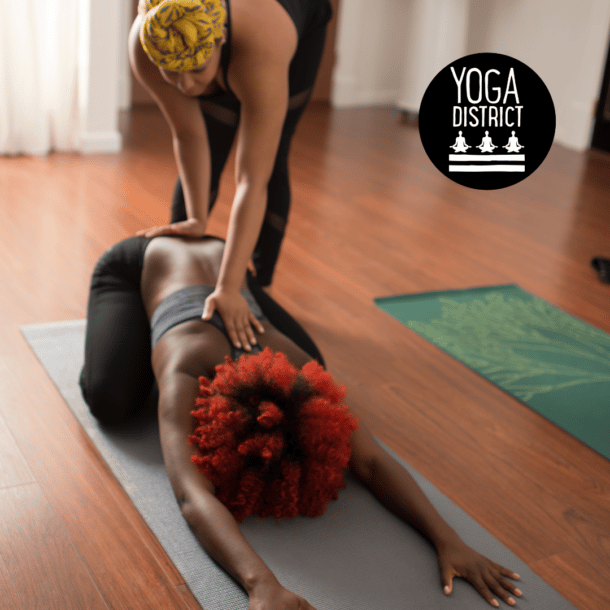By Elizabeth Kanter
What happens in your body when you get stressed out?
• Where do you feel sensation?
• What is the quality of your breath?
• How does your energy feel?
• What is going on in your mind and your thoughts?
Under stress, vicious cycles of all kinds can take hold – inactivity or overworking, overeating or under-nourishing, isolation or distraction, sleep deprivation or oversleeping, substance abuse or digital addictions. Coping behaviors can lead to even more stress. So how do we break the cycle?
We all have bad habits and good habits. Habits are just an accumulation of repeated thoughts and activities. Thoughts repeated become patterns… patterns repeated become behaviors… behaviors repeated can become personalities… and personalities repeated can become reality. In other words, our thoughts shape and can become our reality.
Repetition of thoughts and actions starts to create grooves, or samskaras, in our lives. Once you’re in a groove, it’ easier to stay there than to get out of that groove and into another one. Cars on the road or water on the ground follows the same pattern: staying in a smoothly worn path or channel is simply a lot easier to do than climbing up and out. Inertia and momentum are at work here.
So how does yoga and yoga philosophy figure into all of this? The first step is awareness. We can start by simply noticing what it feels like when we are stressed out – what are the sensations in body, breath, and mind. And the quality of awareness is non-judging. We simply observe.
Why is awareness so important? It’s nearly impossible to shift and change out of patterns that we don’t think are working for us if we don’t even know what they are!
Yoga asana is an amazing place to start practicing this awareness. Can we simply notice and observe what’s happening in a pose (as long as there’s no pain) without judgment? Without striving? Without clinging or pushing away what’s actually happening? When we can simply be with what IS rather than resisting it or wanting it to be otherwise, there’s less of an internal struggle, less resistance. We can reduce the extra layers of pain, suffering, and stress that we add on top of whatever it is that’s already going on.
The more we practice awareness in the safe space of a yoga class, on the mat, the easier and more familiar it becomes to carry that witnessing, observational quality off the mat into our day to day lives…. to not get so caught up in believing everything that is going on in our thoughts.
And that’s in itself is the definition of yoga: the stilling of the turnings or the mind, or citta vritti nirodha. We give the mind something to focus on so that instead of running around, it can calm down.
• When we focus solely on our bodies and breath in asana, we give our minds something to focus on and keep coming back to in order to stay present in the moment.
• When we practice breathing or pranayama, we keep our brains occupied with the quality and direction of our vital life force moving in and out.
• When we sit to practice concentration or meditation, no matter how briefly, we can start by concentrating single-pointedly on following the breath, or silently repeating a mantra – a word or phrase, or on a powerful image.
Once we have the ability to find a little bit of calm in our own heads, it’s easier to recognize thoughts and feelings without being swept away with them and without identifying with them. We can get to know our own patterns and simultaneously discover that those thought and emotion patterns are not who we are – they’re simply how we have become accustomed to reacting to a kind of stressful situation.
When we can notice our reactions without getting wrapped up in them, we can actually be more connected to the moment and what’s actually happening right now. And then we can notice more skillfully what are the conditions that are causing us stress – and eliciting strong thoughts and feelings. Some of these conditions we might even be creating ourselves!
But many stress triggers will be beyond our control. So instead of fighting or fleeing from stressful situations, we can start to learn to flow with that stress… to stay present to whatever is arising – without struggle – and simply do the best we can given all the current circumstances. We can’t control what happens to us in the world, but with patience, awareness, nonjudgmental awareness, and mindfulness, we can start to learn how to cultivate more pure presence and less stories and layers of reaction. We can be more and more in the moment.
While many yogic practices help us to look at our negative thought patterns and allow us the opportunity to notice them and weed them little by little out of the fertile garden of our being, we also have to do more than just pull weeds if we want to grow beautiful and delicious plants! We also have to plant seeds and water them even as we keep diligently weeding.
During yoga class, when your teacher invites to think of something you are grateful for, or encourages you to call to mind someone for whom you feel compassion, or offers you the opportunity to set an intention or a sankalpa, these are all opportunities to build and strengthen a new habit of looking for the good, for the beautiful or the shri. These positive things are always there, we just might have to shift what we are looking for. It’s not to say that we should deny or ignore the darkness or melancholy, the anger or fear, the jealousy or negativity, that we pretend everything is hunky dory. But when we reflect on how a challenging pose or a challenging experience offers us the opportunity to get stronger or to grow, how simply observing our thoughts with kindness can help us be more loving towards ourselves in a way that simply no one else can, we may be a little more inclined to remember that the sun is there somewhere behind the clouds even when we are in the eye of the storm or weathering the darkest of days.
Awareness, breath, movement, and meditation are all practices we can do on the mat and in the studio…. But really they’re all preparation for how to surf the stresses and storms of day to day life with less suffering and more steadiness and ease.
Written by Elizabeth Kanter, a DC yoga therapist teaching stress relieving classes at Yoga District yoga studios in Washington DC.


